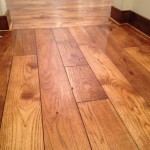Vinyl floor glue is a special adhesive used to secure vinyl flooring to the subfloor. It is designed to provide a firm and long-lasting bond between the floor and the subfloor. Vinyl floor glue is available in a variety of formulas, so it’s important to select the right one for your particular project. In this article, we’ll look at the characteristics of vinyl floor glue and how to select the right glue for your project.
Types of Vinyl Floor Glue
Vinyl floor glue is available in two main types: solvent-based and water-based. Solvent-based glues are more durable and easier to apply, but they can be more expensive and require more care when working with. Water-based glues are less expensive, easier to work with, and less hazardous, but they may not provide as strong of a bond as solvent-based glues.
How to Select the Right Glue
When selecting a vinyl floor glue, it’s important to consider the type of vinyl flooring you’re installing. Some glues are designed specifically for use with vinyl tile, while others may be suitable for use with sheet vinyl. It’s also important to consider the type of subfloor you’ll be working with, as some glues are better suited for certain subfloor materials. Finally, you should consider the environmental conditions in your space, as some glues may be better suited for damp or wet areas.
Preparing the Subfloor and Vinyl
Before applying the vinyl floor glue, it’s important to prepare the subfloor and vinyl. The subfloor should be clean and smooth, and any loose material should be removed. Once the subfloor is prepared, the vinyl should be cut and fit to the area. When laying the vinyl, it’s important to leave a small gap between the vinyl and the wall to allow for expansion and contraction. This gap should be filled with a flexible sealant.
Application of the Glue
Once the subfloor and vinyl are prepared, the glue can be applied. Solvent-based glues should be mixed with a paint stirrer or a drill-mounted mixing blade. The glue should be applied in a thin, even layer, and any excess should be removed before it dries. Water-based glues should be mixed with a paint stirrer and applied in a thin, even layer as well. Again, any excess glue should be removed before it dries.
Curing Time
Once the glue has been applied, it should be allowed to cure for a minimum of 24 hours before any traffic is allowed on the floor. If possible, it’s best to wait 48 hours for a stronger bond. After the curing time has elapsed, the floor should be cleaned of any excess adhesive. This will help ensure a strong and lasting bond between the vinyl and the subfloor.
Conclusion
Vinyl floor glue is an important adhesive used to secure vinyl flooring to the subfloor. It is available in two main types: solvent-based and water-based. It’s important to select the right glue for your project, based on the type of vinyl flooring and subfloor you’re working with. Before applying the glue, the subfloor and vinyl should be prepared, and the glue should be applied in a thin, even layer. The glue should be allowed to cure for a minimum of 24 hours before any traffic is allowed on the floor. Following these steps will help ensure a strong and lasting bond between the vinyl and the subfloor.














Related Posts








